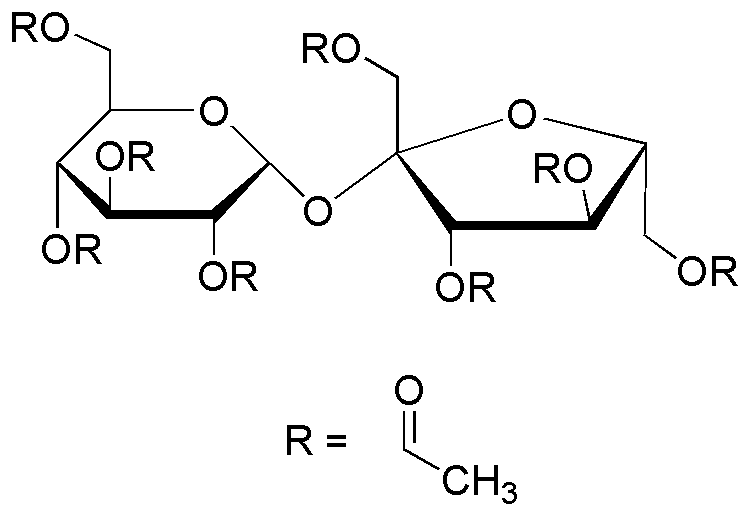D-(+)-Sucrose octaacetate is widely utilized in research focused on:
- Food Industry: As a food additive, it serves as a flavor enhancer and stabilizer, improving the texture and taste of various products.
- Pharmaceuticals: It is used in drug formulation to enhance solubility and bioavailability, making medications more effective for patients.
- Cosmetics: This compound acts as an emulsifier and thickening agent in skincare products, providing a smooth application and improved product stability.
- Biotechnology: In laboratory settings, it is employed as a protective agent in cell cultures, helping maintain cell viability during experiments.
- Research Applications: It is utilized in various chemical syntheses and studies, particularly in carbohydrate chemistry, due to its unique structural properties.
General Information
Properties
Safety and Regulations
Applications
D-(+)-Sucrose octaacetate is widely utilized in research focused on:
- Food Industry: As a food additive, it serves as a flavor enhancer and stabilizer, improving the texture and taste of various products.
- Pharmaceuticals: It is used in drug formulation to enhance solubility and bioavailability, making medications more effective for patients.
- Cosmetics: This compound acts as an emulsifier and thickening agent in skincare products, providing a smooth application and improved product stability.
- Biotechnology: In laboratory settings, it is employed as a protective agent in cell cultures, helping maintain cell viability during experiments.
- Research Applications: It is utilized in various chemical syntheses and studies, particularly in carbohydrate chemistry, due to its unique structural properties.
Documents
Safety Data Sheets (SDS)
The SDS provides comprehensive safety information on handling, storage, and disposal of the product.
Product Specification (PS)
The PS provides a comprehensive breakdown of the product’s properties, including chemical composition, physical state, purity, and storage requirements. It also details acceptable quality ranges and the product's intended applications.
Certificates of Analysis (COA)
Search for Certificates of Analysis (COA) by entering the products Lot Number. Lot and Batch Numbers can be found on a product’s label following the words ‘Lot’ or ‘Batch’.
Numéro de catalogue
Numéro de lot/série
Certificates Of Origin (COO)
This COO confirms the country where the product was manufactured, and also details the materials and components used in it and whether it is derived from natural, synthetic, or other specific sources. This certificate may be required for customs, trade, and regulatory compliance.
Numéro de catalogue
Numéro de lot/série
Safety Data Sheets (SDS)
The SDS provides comprehensive safety information on handling, storage, and disposal of the product.
DownloadProduct Specification (PS)
The PS provides a comprehensive breakdown of the product’s properties, including chemical composition, physical state, purity, and storage requirements. It also details acceptable quality ranges and the product's intended applications.
DownloadCertificates of Analysis (COA)
Search for Certificates of Analysis (COA) by entering the products Lot Number. Lot and Batch Numbers can be found on a product’s label following the words ‘Lot’ or ‘Batch’.
Numéro de catalogue
Numéro de lot/série
Certificates Of Origin (COO)
This COO confirms the country where the product was manufactured, and also details the materials and components used in it and whether it is derived from natural, synthetic, or other specific sources. This certificate may be required for customs, trade, and regulatory compliance.


